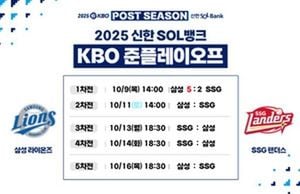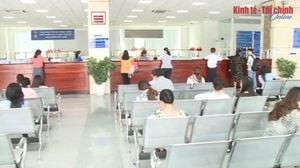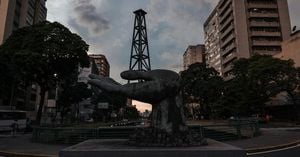On September 19, 2025, Newmont Corporation, the world’s largest gold miner by market capitalization, announced the first gold pour at its much-anticipated Ahafo North Project in Ghana. The milestone, which marks the transition from development to the operational phase, is a major achievement for the $91.7 billion company, which has been steadily expanding its African footprint. According to a company statement cited by InvestingPro, commercial production at Ahafo North is scheduled for the fourth quarter of 2025, setting the stage for what Newmont describes as "the best unmined gold deposit in West Africa."
But while Newmont celebrates its operational progress, a parallel story is unfolding across Ghana’s gold sector—one with far-reaching environmental and health consequences. A government-backed study released just a day earlier has revealed that mercury contamination in artisanal mining communities has reached levels up to 134 times above what is considered safe, according to Reuters. This troubling finding, based on a year of soil, water, crop, and fish sampling in six of Ghana’s 13 mining regions, highlights the stark divide between the regulated, multinational mining sector and the sprawling, poorly regulated world of small-scale gold mining.
The Ahafo North Project is expected to produce between 275,000 and 325,000 ounces of gold annually over a projected 13-year mine life, according to Newmont’s press release. The development phase has already generated approximately 4,500 contracted jobs, and once fully operational, the site is forecasted to create about 560 permanent positions and 1,000 contracted roles. Located roughly 30 kilometers from Newmont’s Ahafo South operations at Afrisipakrom, the new mine will become the company’s second active site in Ghana following the divestment of the Akyem mine earlier this year.
Newmont’s CEO Tom Palmer hailed the achievement, stating, "The first gold pour at Ahafo North represents a major operational milestone that validates years of careful planning, engineering, and construction." The company’s financials reflect this momentum: with revenue growth of 38.4% over the past twelve months and an EBITDA of $10.94 billion, Newmont appears well positioned for continued expansion, as detailed by InvestingPro’s comprehensive report.
Yet, as the multinational celebrates, the broader Ghanaian gold sector is grappling with the environmental and social costs of its gold rush. According to the joint study by Pure Earth, a New York-based environmental group, and Ghana’s Environmental Protection Authority, surging bullion prices have fueled a boom in artisanal mining. In the first eight months of 2025, Ghana’s artisanal sector exported 66.7 metric tons of gold—worth $6.3 billion—compared with 53.8 tons for the entire previous year. This rapid growth has overwhelmed regulators and blurred the lines between legal and illegal mining activities, Reuters reports.
The consequences of this boom are stark. Soil samples from Konongo Zongo, one of the surveyed communities, averaged mercury concentrations of 56.4 parts per million (ppm), far exceeding the World Health Organization’s safety threshold of 10 ppm. Peak readings soared to 1,342 ppm, while arsenic levels reached an astonishing 10,060 ppm—more than 4,000% above WHO guidelines. The WHO warns that high arsenic exposure can cause skin damage, kidney failure, and significantly increase the risk of lung, bladder, and skin cancers through contaminated water and food.
The report, shared with environmentalists and government officials in Accra on September 18, underscores the urgency of the situation. "The cumulative exposure to this cocktail of toxic metals through multiple pathways—ingestion, inhalation and dermal contact—is a serious health hazard requiring immediate intervention," the report stated, as quoted by Reuters.
For many in Ghana’s mining communities, these warnings are not abstract. Anthony Enimil, a member of the Ghana Pediatric Society, told Reuters, "We're seeing more children from mining areas with kidney disorders—some are now on dialysis. X-rays show mercury pellets in their bodies after accidental ingestion." The health impacts are already being felt, even as the government struggles to respond.
Efforts to address the crisis are underway, albeit slowly. Godwin Armah, General Secretary of the Ghana National Association of Small-Scale Miners, explained that his organization has "banned the use of mercury in gold amalgamation and now use the Gold Kacha (concentrator) as a safer alternative. We are also stepping up sensitisation." The Gold Kacha, a simple device for separating gold, is seen as a safer method, but adoption and enforcement remain uneven across the sector.
Toxic pollution from small-scale and unregulated gold mining is now prevalent across all 13 of Ghana’s mining regions, according to environmentalists such as A Rocha Ghana. President John Dramani Mahama has promised a crackdown on illegal mining, establishing the Ghana Gold Board to oversee the sector. However, critics say progress is slow, and public protests have erupted demanding more decisive action against illegal miners.
Meanwhile, Newmont’s corporate strategy continues to evolve. The company recently completed the sale of its entire stake in Orla Mining Ltd. for $439 million and agreed to sell its Coffee Project in Yukon, Canada, to Fuerte Metals Corporation for up to $150 million, with the deal expected to close by the end of 2025. These moves reflect a broader trend of portfolio optimization and geographic focus, as Newmont consolidates its presence in core regions like West Africa.
Market analysts have responded to Newmont’s recent performance with mixed assessments. On September 22, 2025, RBC Capital upgraded Newmont’s stock rating from Sector Perform to Outperform, raising its price target to $95.00 and citing an operational turnaround. In contrast, Macquarie downgraded the stock from Outperform to Neutral, setting a price target of $72.00 after a 35% rise in Newmont’s share price over the last three months. These differing views highlight the uncertainty and volatility that continue to characterize the global gold market.
Newmont’s acquisition of the broader Ahafo lease in 2002 from Normandy Mining laid the groundwork for its current expansion. Now, as the company ramps up toward full operational readiness at Ahafo North, the contrast between large-scale, regulated mining and the artisanal sector’s environmental crisis has never been more apparent. The juxtaposition raises difficult questions for Ghana’s policymakers, investors, and communities: Can the benefits of gold mining be realized without sacrificing the health and safety of those living closest to the mines?
As the Ahafo North Project moves toward commercial production and Ghana’s artisanal gold sector continues to boom, the country stands at a crossroads—one defined by both promise and peril. The coming months will test whether industry leaders, regulators, and communities can work together to ensure that Ghana’s gold legacy is one of prosperity, not pollution.



